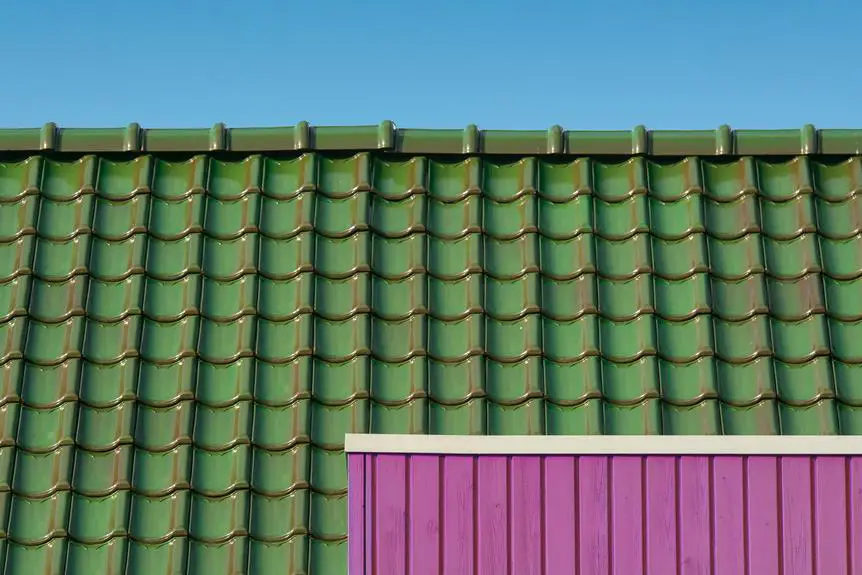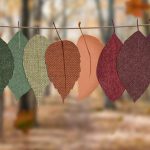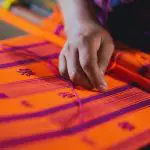Hey there, curious crafter! Ever found yourself in a sticky situation, wondering if Modge Podge can stand up to the elements? Look no further – this ultimate fabric guide has got you covered.
From unraveling the mystery of what Modge Podge actually is, to diving into how it works its magic on fabric, we'll explore the waterproofing potential of this versatile craft staple.
Whether you're a seasoned pro or just dipping your toes into the world of fabric crafting, this guide will arm you with the knowledge and tips you need to master Modge Podge and keep your creations looking flawless.
Let's get ready to unlock the secrets of Modge Podge and waterproofing – it's time to dive in!
Key Takeaways
- Modge Podge can be used as a waterproof sealant for fabric crafts.
- Multiple coats of Modge Podge can enhance fabric's durability against water.
- Heat setting the fabric after drying can enhance waterproofing.
- Alternative fabric sealants such as silicone, polyurethane, acrylic, and rubber can be explored for different textures and finishes.
What Is Modge Podge
When using Modge Podge, understanding its composition is essential for achieving the desired results. Modge Podge is a versatile decoupage medium that serves various purposes in the crafting world. Its uses are diverse, ranging from creating a glossy finish on crafts to acting as a reliable adhesive for collages and mixed media projects. The benefits of Modge Podge are numerous; it dries quickly, seals and protects artwork, and can be sanded to a smooth finish. Its versatility makes it an essential tool for do-it-yourself (DIY) projects, allowing crafters to explore their creativity across different mediums.
To achieve the best results, mastering the application techniques is crucial. When using Modge Podge, apply it evenly using a brush, foam applicator, or even your fingers for certain techniques. Understanding how to layer the product is important, as it can impact the overall finish of your project. Whether you're working on paper, fabric, wood, or other surfaces, Modge Podge offers a reliable solution for all your DIY endeavors.
With the right techniques and a bit of creativity, Modge Podge can elevate your crafting projects to new heights.
How Does Modge Podge Work
To utilize Modge Podge effectively, you apply it directly onto your chosen surface. This versatile adhesive, sealant, and finish can be used on various materials such as wood, fabric, paper, and more.
When applying Modge Podge, start by ensuring that your surface is clean and dry. Use a brush to apply a thin, even layer of Modge Podge onto the surface, working quickly to avoid streaks.
You can then place your fabric, paper, or other decorative elements onto the Modge Podge-coated surface, smoothing out any wrinkles or air bubbles with your fingers or a clean, dry cloth. Once your project is assembled, apply another thin layer of Modge Podge on top to seal and protect it.
Modge Podge isn't only a strong adhesive but also provides a durable finish that's resistant to moisture and can be cleaned with soap and water. Its versatility and protective qualities make it a popular choice for various crafts, decoupage, and DIY projects.
Modge Podge and Fabric
You can use Modge Podge as a waterproof sealant for fabric crafts.
Before applying Modge Podge, it's essential to prepare your fabric properly. Ensure the fabric is clean, dry, and wrinkle-free.
Modge Podge can be applied to fabric using a brush or sponge applicator. Apply a thin, even layer, and allow it to dry completely between coats.
For waterproofing techniques, consider adding multiple coats of Modge Podge, focusing on areas that are more prone to moisture exposure. This will enhance the durability and resistance of the fabric against water and other elements.
If you prefer alternative sealants, some fabric sealers are specifically designed for waterproofing and may provide different textures and finishes.
When crafting with fabric and Modge Podge, consider various options such as creating waterproof outdoor banners, customizing umbrellas, or designing unique fabric coasters.
If you encounter any issues or have questions, refer to FAQs and troubleshooting guides.
Waterproofing With Modge Podge
Looking to waterproof your fabric projects with Modge Podge? We've got you covered.
Let's explore Modge Podge waterproofing techniques, its durability, and water resistance to help you achieve the perfect finish for your creations.
Modge Podge Waterproofing Techniques
When waterproofing with Modge Podge, apply a thin, even layer to the fabric using a foam brush. This will help ensure proper coverage and prevent the fabric from becoming stiff.
Here are some Modge Podge waterproofing techniques to help you protect your DIY projects and waterproof fabric effectively:
- Multiple Thin Layers: Apply several thin layers of Modge Podge, allowing each layer to dry completely before adding the next. This will create a more durable waterproof seal.
- Heat Setting: After applying Modge Podge and allowing it to dry, heat set the fabric with an iron to enhance its waterproofing capabilities.
- Outdoor Modge Podge: Consider using Outdoor Modge Podge for fabric protection in items that will be exposed to moisture or the elements.
- Seal the Edges: Pay special attention to sealing the edges and seams of the fabric to prevent water from seeping through.
These techniques will help you achieve lasting waterproof results for your fabric projects.
Durability and Water Resistance
For optimal durability and water resistance when waterproofing with Modge Podge, apply a sufficient amount of the product to ensure thorough coverage of the fabric. This is essential for effective fabric protection.
When applying Modge Podge for waterproofing, make sure to coat the entire surface evenly, paying special attention to seams and edges. To enhance the water-resistant properties, consider applying multiple thin layers rather than one thick layer. Allow each layer to dry completely before applying the next.
Once the Modge Podge has dried, consider heat-setting the fabric to improve its durability. This can be done by ironing the fabric or placing it in a dryer on a high heat setting.
These waterproofing techniques will help maximize the durability and water resistance of your fabric when using Modge Podge.
Tips for Using Modge Podge on Fabric
To achieve the best results when using Modge Podge on fabric, apply a thin, even layer to the surface using a foam brush. Here are some tips to help you get the most out of your Modge Podge and fabric projects:
- Fabric Preparation: Before applying Modge Podge, ensure that your fabric is clean and free from any dirt or debris. Pre-wash and dry the fabric to remove any sizing or chemicals that may interfere with the Modge Podge's adhesion.
- Waterproofing Techniques: If you want to make your fabric project waterproof, consider mixing the Modge Podge with a waterproofing agent before applying it to the fabric. This will provide an extra layer of protection against moisture.
- Smooth Application: When applying Modge Podge to fabric, work in small sections and use gentle, even strokes with the foam brush. This will help prevent any lumps or wrinkles in the fabric.
- Drying Time: Allow the Modge Podge to dry completely between layers to ensure a strong bond with the fabric. Follow the manufacturer's instructions for drying times and consider using a hairdryer on a low heat setting to speed up the process.
Modge Podge Alternatives for Waterproofing
Looking for alternatives to Modge Podge for waterproofing your fabric crafts?
There are several waterproof sealant options that you can consider as substitutes, and we'll compare them to Modge Podge to help you make an informed choice.
Crafting with alternatives can open up new possibilities for your projects, so let's explore the options available.
Waterproof Sealant Options
Consider waterproof sealant options such as silicone sealant or polyurethane for alternatives to Modge Podge when waterproofing your fabric projects. These sealants provide durable, long-lasting protection against water, making them ideal for various fabric applications.
Here are some popular waterproof sealant options to consider:
- Silicone Sealant: Known for its flexibility and strong adhesion, silicone sealant creates a waterproof barrier, making it perfect for outdoor fabric projects.
- Polyurethane: This sealant offers excellent water resistance and dries to a clear, flexible finish, making it suitable for a wide range of fabric types.
- Acrylic Sealant: With its quick drying time and flexibility, acrylic sealant provides a waterproof coating suitable for lightweight fabrics.
- Rubber Sealant: Ideal for heavy-duty fabrics, rubber sealant forms a durable, waterproof layer, perfect for items that will be exposed to extreme conditions.
These waterproof sealants offer effective alternatives to Modge Podge, ensuring your fabric projects remain protected from water damage.
Modge Podge Comparison
When comparing Modge Podge to other waterproofing options, you can assess their effectiveness and durability for your specific fabric projects. Here's a comparison of Modge Podge with other popular waterproofing alternatives:
| Waterproofing Options | Application | Fabric Testing |
|---|---|---|
| Modge Podge | Brush-on | Moderate |
| Fabric Sealant | Spray-on | High |
| Beeswax | Rub-on | Low |
| Silicone | Spray-on | High |
| Polyurethane | Brush-on | High |
Each option has its unique application method and varying levels of effectiveness when it comes to fabric testing. Consider your specific fabric and project needs when choosing the right waterproofing solution.
Crafting With Alternatives
Craft with alternative waterproofing options instead of Modge Podge for your fabric projects. When it comes to waterproofing techniques for your fabric crafts, there are various alternatives to Modge Podge that can provide excellent results. Consider these fabric alternatives:
- Fabric Wax: Use a specialized fabric wax to create a waterproof barrier on your fabric projects.
- Silicone Sealant: Apply a thin layer of clear silicone sealant to make your fabrics waterproof.
- Waterproof Fabric Spray: Opt for a waterproof fabric spray specifically designed to protect fabrics from moisture.
- Polyurethane Spray: Use a polyurethane spray to provide a waterproof coating for your fabric creations.
These alternatives offer diverse ways to achieve waterproofing, allowing you to choose the method that best suits your specific fabric project.
Modge Podge FAQs
Have you ever wondered about the waterproofing capabilities of Modge Podge? When it comes to fabric, Modge Podge can indeed be used to waterproof various projects. To ensure the best results, it's essential to employ proper waterproofing techniques. Apply a generous amount of Modge Podge to the fabric, making sure to cover the entire surface. Once dry, repeat the process for added durability. Keep in mind that while Modge Podge can provide some level of water resistance, it may not be completely waterproof in all situations.
Now, let's address some of the most frequently asked questions about Modge Podge. Many crafters wonder about its durability, especially when compared to other crafting alternatives. While Modge Podge is known for its versatility, it's important to consider the specific needs of your project. For instance, if you require a high level of waterproofing, you might want to explore specialized fabric sealants. Additionally, for projects that will be exposed to extreme conditions, such as outdoor furniture or accessories, exploring alternative waterproofing methods might be beneficial. Always test your chosen method on a small, inconspicuous area before committing to the entire project to ensure the desired level of waterproofing is achieved.
Conclusion and Final Thoughts
In your fabric projects, it's crucial to carefully assess the level of waterproofing required for the best long-term results. After considering the waterproofing properties of Mod Podge for fabric, here are some final thoughts to help you make an informed decision.
- Pros and Cons of Mod Podge Waterproofing:
- Pros: Mod Podge provides a protective layer, is easy to use, and can be used on various fabric types.
- Cons: It may not be fully waterproof, especially in prolonged exposure to water, and might require reapplication for extended durability.
- Best Applications for Mod Podge Waterproofing:
- Best for indoor fabric projects, such as decorative banners, fabric-covered storage boxes, and mixed media art.
- Not ideal for outdoor fabric items like umbrellas or raincoats, where high exposure to water is expected.
When considering Mod Podge for waterproofing fabric, weigh these pros and cons to determine if it aligns with your project's specific needs. While it may not be entirely waterproof for all applications, Mod Podge can still be a valuable tool for adding a protective layer to your fabric creations.
Frequently Asked Questions
Can Modge Podge Be Used to Waterproof Outdoor Fabrics?
For outdoor use, Mod Podge can enhance the durability of fabrics. Applying multiple coats and allowing for thorough drying is key. This technique ensures the best protection against weather elements and extends the life of outdoor fabrics.
Is Modge Podge Safe to Use on Children's Clothing or Items That Will Come Into Contact With Skin?
When it comes to skin safety, Modge Podge should be avoided on children's clothing or items that will come into contact with skin. There are alternative applications that are safer for these purposes.
Can Modge Podge Be Used to Waterproof Fabric That Will Be Exposed to High Heat or Direct Sunlight?
Yes, Modge Podge can be used to waterproof fabric that will be exposed to high heat or direct sunlight. It provides excellent fabric protection and is a great option for ensuring your fabric stays protected in these conditions.
How Long Does It Take for Modge Podge to Fully Waterproof Fabric?
To waterproof fabric with Mod Podge, start by applying a generous layer and allowing it to dry completely. The benefits of waterproofing include protection from moisture and stains, making your fabric durable and long-lasting.
Are There Any Special Care Instructions for Fabrics Treated With Modge Podge to Maintain Waterproofing?
To maintain waterproofing on fabrics treated with Modge Podge, follow special care instructions. Regularly reapply the product for durability. Avoid harsh washing or drying methods. These steps will ensure long-term effects and preserve the fabric's waterproofing.
- How to Tell the Difference Between Cotton and Polycotton: 3 Simple Tests - June 23, 2025
- Does Polycotton Shrink? How to Wash and Dry It Without Damage - June 23, 2025
- Can You Iron Polycotton? Tips for a Wrinkle-Free Finish - June 23, 2025







